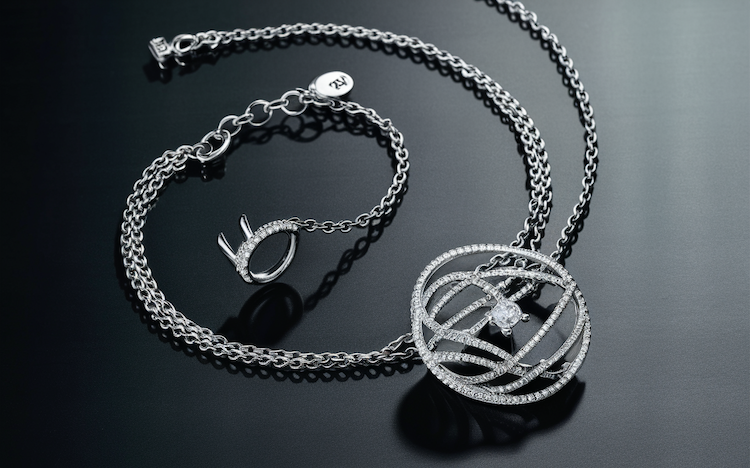
Individuals with sensitive skin often grapple with a crucial question about the hypoallergenic nature of the products they use, one of them being: “Is sterling silver hypoallergenic for earrings?” This question is more than a matter of curiosity—it’s about comfort, style, and avoiding the irritation that can come from wearing the wrong type of metal. In this article, we will talk about the hypoallergenic nature of sterling silver, offering insights for those looking to make informed decisions about their jewelry choices.
What is Sterling Silver made of?
Sterling silver is a silver alloy composed of 92.5% silver and 7.5% other metals, but most typically copper, renowned for its lustrous finish and durability. But when it comes to earrings, a piece of jewelry in constant contact with sensitive skin, the question of its hypoallergenic properties becomes a grave concern.
Why Sterling silver may not be hypoallergenic
At its core, pure silver is known for its hypoallergenic properties. This means that silver is unlikely to cause any allergic reaction or skin irritation on its own, making it an ideal choice for individuals with sensitive skin. The natural purity of silver, devoid of any additional metals or allergens, ensures that it is gentle and safe for direct skin contact.
However, the transition from pure silver to sterling silver involves the introduction of other metals to the alloy, primarily to enhance its physical properties. Sterling silver’s hallmark is its 92.5% silver content, with the remaining 7.5% typically comprised of copper. Copper is added to the alloy to bolster the silver’s strength and durability, making it more suitable for intricate jewelry designs and daily wear.
Why the percentage of copper matters
While copper’s role in augmenting sterling silver’s structural integrity is invaluable, it also introduces the possibility of allergic reactions for a subset of the population – Those with delicate skin.
Copper, like nickel, can act as an allergen for some individuals, leading to skin irritation or allergic contact dermatitis. This reaction is characterized by redness, itching, and discomfort, particularly in areas of prolonged metal contact, such as the earlobes with earrings. The susceptibility to such reactions varies from person to person, with some experiencing significant discomfort while others may wear sterling silver without any adverse effects.
Factors Influencing Hypoallergenic Properties
Metal Purity
The higher the silver content, the less likely it is to cause an allergic reaction. Sterling silver’s high percentage of pure silver typically minimizes allergic responses, but the presence of copper can still pose a risk for those with specific sensitivities.
Nickel Content
Although not a standard component, some sterling silver alloys may contain traces of nickel, a well-known allergen. Those with nickel allergies must verify the composition of their sterling silver earrings to ensure they are nickel-free.
Coatings and Treatments
Some sterling silver earrings are coated with rhodium or other hypoallergenic materials to enhance their appearance and protect against tarnish. These coatings can also serve as a barrier between the skin and potential allergens in the metal, improving the hypoallergenic properties of the earrings.
Selecting Hypoallergenic Sterling Silver Earrings

For those with sensitive ears, choosing the right pair of sterling silver earrings involves a few considerations:
- Look for High-Quality Sterling Silver: Opt for reputable jewelers who provide detailed information about the purity and composition of their sterling silver.
- Check for Nickel-Free Certifications: Ensure the earrings are certified nickel-free if you have known sensitivities or allergies to nickel.
- Consider Coated or Plated Earrings: Earrings coated with a hypoallergenic material can offer an extra layer of protection against skin irritation.
Care Tips for Sensitive Ears
Maintaining your sterling silver earrings properly can help preserve their hypoallergenic qualities and ensure they remain comfortable to wear:
- Regular Cleaning: Keep your earrings clean and free from substances that could irritate the skin. A gentle cleaning solution designed for sterling silver can remove tarnish without damaging the metal.
- Dry Storage: Store your earrings in a dry, tarnish-resistant environment to prevent oxidation and potential skin irritants from forming on the metal.
Recap: Steps to a More Hypoallergenic Sterling Silver for Earrings
Remember, for those with a known sensitivity to copper or who have experienced reactions to sterling silver in the past, some steps can be taken to mitigate these risks:
- Opt for high-quality sterling silver.
- Ensuring that the jewelry is well-cared for and clean
- Consider applying protective coatings or treatments that can all contribute to a more comfortable wearing experience.
- Opt for sterling silver alloys that minimize or substitute copper percentage with other less reactive metals such as titanium.
Conclusion
“Is sterling silver hypoallergenic for earrings?” The answer is nuanced. While sterling silver is largely considered hypoallergenic due to its high silver content, the addition of other metals like copper and, occasionally, nickel means that it may not be suitable for everyone. By choosing high-quality, nickel-free sterling silver earrings and considering coated or treated options, individuals with sensitive skin can enjoy the beauty of sterling silver without discomfort. Always prioritize quality and transparency when selecting jewelry, and don’t hesitate to inquire about the specific materials used to ensure the best match for your skin type.
In navigating the world of sterling silver earrings, armed with knowledge and attentiveness to detail, you can find pieces that are stylish and beautiful and kind and gentle to your skin.
References:
- American Academy of Dermatology Association:
- The Skin Cancer Foundation:
- Journal of Investigative Dermatology:
- Title of the Study on Allergic Reactions to Jewelry Metals. Journal of Investigative Dermatology, volume(2009). DOI
- National Institutes of Health (NIH):
- Jewelry Consumer Research and Education Center:



